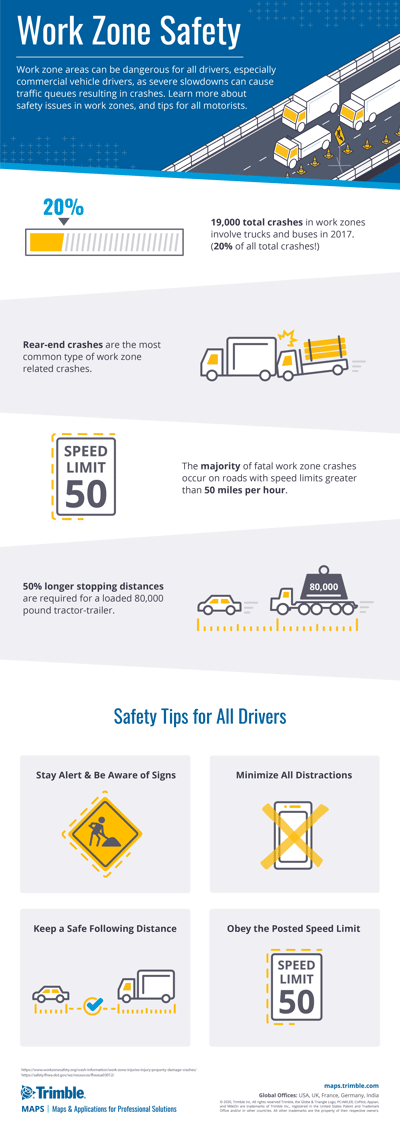This April marked the 20th anniversary of National Work Zone Awareness Week (NWZAW). The idea for NWZAW started back in the late 90s with a group of staff members at the Virginia Department of Transportation who wanted to raise awareness about work zone safety before construction projects picked up during the Spring and Summer. Over the years, the NWZAW has not only helped reduce the number of work zone crashes, but also encouraged companies in the transportation sector to innovate and embrace technology that makes everyone—from construction workers to truck drivers to motorists—safer.
Inspired by NWZAW, and based on the research of, and a collaboration with Purdue University and its Joint Transportation Research Program (JTRP), we’ve developed a slowdown alert service that proactively notifies commercial drivers to slow down if there is a drop in road speed ahead to reduce back-of-queue accidents, particularly in work zone areas nationwide.
The Importance of Proactive Slowdown Alerts
Maintaining road infrastructure can’t happen without construction work zones, but these zones can pose safety risks. Work zone slowdowns can cause traffic, forcing vehicles to suddenly decelerate from 65 mph to less than 10 mph over short sections of highway. Commercial trucks require up to 50 percent more stopping distance than cars and passenger vehicles, meaning work zone slowdowns represent particular danger. Check out our infographic with recent stats about commercial vehicles in work zones and safe driving tips for all.
Fortunately, technology can help by alerting commercial truck drivers well in advance of work zone slowdowns. This gives drivers enough time to safely respond, which helps reduce rear end crashes, prevent injuries and save lives. According to Darcy Bullock, professor of Civil Engineering and director of the Joint Transportation Research Program, Purdue University, communicating information about work zone slowdowns to drivers in a timely and non-distracting way can go a long way to reducing crashes and improving highway safety.
How Will the Slowdown Alert Service Work?
The slowdown alert service will interpret planned routes against real-time traffic incidents, such as roadwork and accidents, and slowdown patterns to understand congestion ahead. It will then alert drivers using our commercial navigation and driver trip planning apps, CoPilot Truck and MileOn by PC*MILER. For more information on availability and other details, read our full Press Release >
The safety of the roads depends on people from multiple sectors coming together for the good of all. The public sector, academia and researchers, transportation companies, technology companies, contractors, construction workers, and individual drivers all play a part in reducing risk and protecting each other. Collaborating across sectors to equip drivers with better information and training on best practices is what NWZAW is all about. Trimble MAPS is honored to work with partners like Purdue and the JTRP to embody and advance the mission of NWZAW, and most importantly, keep drivers and workers safe.
Resources
1 http://www.nwzaw.org/#
2 https://safety.fhwa.dot.gov/wz/resources/fhwasa03012/
3 https://www.workzonesafety.org/crash-information/work-zone-injuries-injury-property-damage-crashes/
